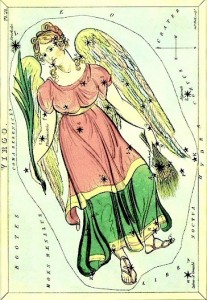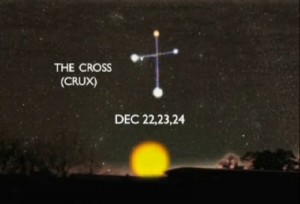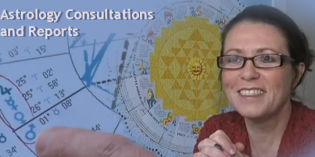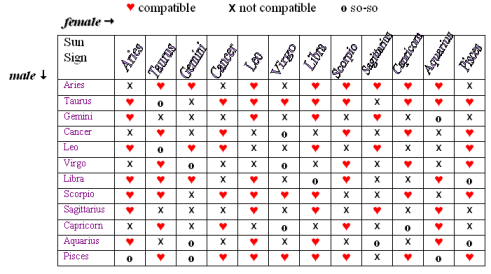Christmas and Astrology
 We now associate Christmas with Christianity but what are the origins of Christmas and how is it related to astrology?
We now associate Christmas with Christianity but what are the origins of Christmas and how is it related to astrology?
As we approach Christmas Day, despite the commercial frenzy, the anticipation of something significant grows. As early as 221CE and definitely by 354CE the birth of Jesus was connected to December 25. The earliest written mention of December 25 as Jesus’ birthday comes from a mid 4th century Roman almanac (The Philocalian Calendar) that lists December 25 as: natus Christus in Betleem Judeae: (Christ was born in Bethlehem of Judea). In fact, no one knows the true birth date of Jesus but even historians believe it to be somewhere in September through Biblical description. It is written that, at the time of his birth, shepherds were tending their flock, implying warmer weather. December 25 is in the heart of the cold Judean winter when shepherds are inside and so is the flock.
And if we go back to the story of Jesus’ birth, he was said to be born of the virgin Mary. In astrology, the virgin refers to the constellation of Virgo (Latin for virgin), commonly depicted as a maiden with a sheaf of wheat, but Virgo is also known as the ‘house of bread’. Note that the Sun is in the constellation of Virgo during August/September, the time of the harvest in the northern hemisphere. Jesus’ alleged birth place Bethlehem means ‘house of bread’, therefore Bethlehem also relates to an area of the sky (Virgo), not necessarily a place on Earth.
The prominence of December 25 begins with Emperor Aurelian who made Sol Invictus (the Unconquered Sun) the state religion of Rome on December 25 in 274. In 313 Constantine made Christianity legal and by 380 Theodosius declared Christianity the religion of Rome. Naturally December 25 became the celebration of the birth of Christ, not Sol Invictus. And similarly, some years later, Charlemagne was crowned Emperor on Christmas Day in 800, King Edmund the Martyr was anointed on Christmas Day in 855, and King William I of England was crowned on Christmas Day 1066, the chart we use for England today.
 Before Christians adopted December 25 as the celebration of the birth of Christ, the northern hemisphere Winter Solstice was celebrated at this time of year. At the time of the winter solstice the days are short, the nights are long and cold and it’s a time for indoor activities and inner reflection. On the day of the solstice, and the 2 days following (22, 23, 24), the Sun ascends to the same point in the sky, which is also its lowest point south, and during this time it is closest to the constellation Crux (cross). The Sun appears to die on the cross. On the 3rd day, December 25, the Sun rises 1° higher in the sky and the day is slightly longer. Before the Solstice, the Sun is said to be “conquered” by the dark but, soon after, daylight hours begin to increase in length. The Sun is said to be reborn – the return of the Sun as King. At the March Equinox / Spring / Easter, the Sun officially overpowers the darkness, ie. is ‘resurrected, as the days become longer than the night. Hence our Sun’s yearly journey parallels the life of Christ (or is it the other way around?).
Before Christians adopted December 25 as the celebration of the birth of Christ, the northern hemisphere Winter Solstice was celebrated at this time of year. At the time of the winter solstice the days are short, the nights are long and cold and it’s a time for indoor activities and inner reflection. On the day of the solstice, and the 2 days following (22, 23, 24), the Sun ascends to the same point in the sky, which is also its lowest point south, and during this time it is closest to the constellation Crux (cross). The Sun appears to die on the cross. On the 3rd day, December 25, the Sun rises 1° higher in the sky and the day is slightly longer. Before the Solstice, the Sun is said to be “conquered” by the dark but, soon after, daylight hours begin to increase in length. The Sun is said to be reborn – the return of the Sun as King. At the March Equinox / Spring / Easter, the Sun officially overpowers the darkness, ie. is ‘resurrected, as the days become longer than the night. Hence our Sun’s yearly journey parallels the life of Christ (or is it the other way around?).
The pagan origins of Christmas stem back to ancient Babylon with the feast of the Son of Isis (Goddess of Nature), which was celebrated on December 25. Wild partying, gluttonous eating and drinking, and gift-giving were traditions of this feast. The Romans celebrated the solstice with the Saturnalia honouring Saturn, the god of agriculture. This whole celebratory season into January was called Dies Natalis Invicti Solis, the Birth of the Unconquered Sun.
And in ancient Egypt, the god Horus was born of the virgin Isis on December 25:
- his birth was accompanied by a star in the east, which 3 kings followed to adore the newborn
- he began teaching at 12, was baptized by Anap at 30
- had 12 disciples that he travelled around with performing miracles (like healing the sick and walking on water)
- he was known by many names such as ‘the lamb of god’, ‘the light’, ‘the good shepherd’ etc
- after being betrayed by Typhon, Horus was crucified, buried and was resurrected 3 days later
But Horus is not alone; many other deities have a very similar story, for example:
- Attis the Phrygian
- Krishna
- Dionysus
- Mithra of Persia
- Odin
- Tammuz
. . . to name a few. Jesus is just one in a long line of ‘solar’ messiahs.
 In fact the ‘story’ of the birth of Christ as it relates to Christmas is purely astrological. The story begins with the bright star in the east that led the three wise men / kings to the baby Jesus. This bright star is Sirius. On December 24 it rises and aligns with the 3 brightest stars in Orion’s belt, commonly known as the 3 kings. They all point to the place where the Sun rises on December 25. The 3 kings follow the star in the east to mark the sunrise ie. the birth of the Sun. This brings us back to the pagan celebration of the Unconquered Sun, and let’s face it, without the Sun there’d be no light, no life and nothing to celebrate !
In fact the ‘story’ of the birth of Christ as it relates to Christmas is purely astrological. The story begins with the bright star in the east that led the three wise men / kings to the baby Jesus. This bright star is Sirius. On December 24 it rises and aligns with the 3 brightest stars in Orion’s belt, commonly known as the 3 kings. They all point to the place where the Sun rises on December 25. The 3 kings follow the star in the east to mark the sunrise ie. the birth of the Sun. This brings us back to the pagan celebration of the Unconquered Sun, and let’s face it, without the Sun there’d be no light, no life and nothing to celebrate !
All hail the mighty Sun of God, and long may it reign in our skies, feed our crops, and bring bountiful harvests to all.
Hope you enjoy the season according to your own tradition and share it happily with your folk and kin.
Happy, Merry Solstice
Note: 2nd and 3rd image courtesy of Zeitgeist: The Movie (2007)













Thanks Nikki. It’s terrific to see a commonsense interpretation of the nativity story – an interpretation I feel is much more likely to be closer to the truth than the version so often peddled by organised religion.
Hi Nikki – what a great bit of research putting all the traditions of the world together.
As to the actual birth date of Christ, I like Percy Seymour’s date of 15 September 7 BC at sunset*. It gives a very appropriate chart.
Cheers, Sue
* Seymour P, Astrology: The Evidence of Science (Arkana)London, 1988, p 200.